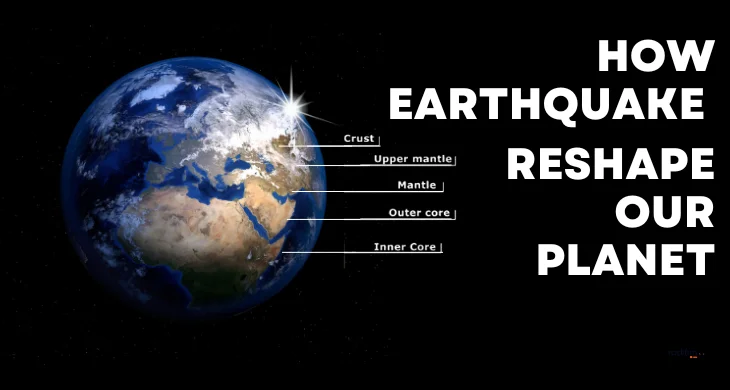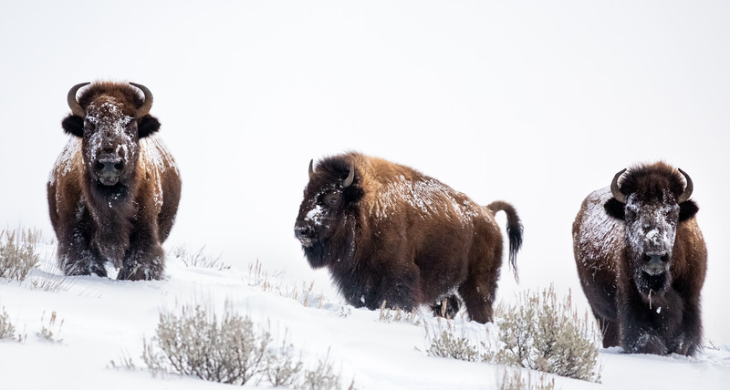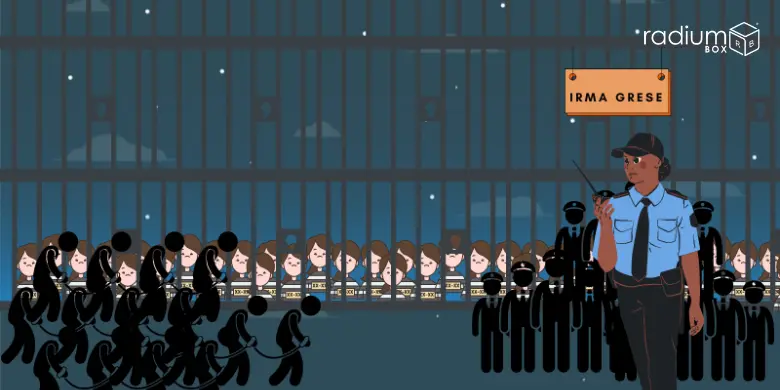Earthquakes are natural phenomena that have shaped our planet for millions of years. This blog explores the profound impact of earthquakes on the Earth’s surface, from tectonic shifts to surface changes and the role of seismic activity in shaping our world.
The Forces Behind Earthquakes:
The Forces Behind Earthquakes refers to the various geological processes and mechanisms responsible for the occurrence of earthquakes, which are natural phenomena characterized by the sudden release of seismic energy beneath the Earth’s surface. These forces are primarily linked to the dynamic nature of the Earth’s crust and the interactions between tectonic plates. Here’s a concise overview of the essential elements:
- Plate Tectonics: Earth’s crust is divided into several large and small pieces known as tectonic plates. These plates are not stationary; they are constantly moving, albeit very slowly. The boundaries where these plates interact are the primary sites of seismic activity.
- Plate Boundaries: Plate boundaries primarily fall into three distinct categories:
- Convergent Boundaries: Plates collide, leading to compression and the potential for powerful earthquakes.
- Divergent Boundaries: Plates move away from each other, causing tension and seismic activity along rifts and mid-ocean ridges.
- Transform Boundaries: Plates slide past each other horizontally, generating shear stress and resulting in strike-slip earthquakes.
- Faults and Fractures: Faults are fractures in the Earth’s crust where rocks have moved relative to each other. Earthquakes often occur along these fault lines, where stress accumulates until it’s released suddenly in the form of seismic waves.
- Elastic Rebound Theory: This theory explains how rocks deform under stress. When stress along a fault exceeds the strength of rocks to hold it, they break, releasing stored energy in an event known as the elastic rebound. The energy propagates as seismic waves, causing ground shaking.
- Human Activities: While natural processes play a significant role in earthquake generation, certain human activities like mining, hydraulic fracturing, and the impoundment of large reservoirs can induce seismicity. These activities can alter stress within the Earth’s crust.
Surface Changes Caused by Earthquakes:
Earthquakes can cause various surface changes and effects, which depend on factors like the earthquake’s magnitude, depth, and proximity to populated areas. Here are some of the surface changes caused by earthquakes:
- Ground Shaking: The most noticeable and widespread effect of an earthquake is ground shaking. The Earth’s surface vibrates as seismic waves propagate through it. This shaking can range from mild to violent and can cause buildings, bridges, and other structures to sway or collapse.
- Landslides: The shaking from earthquakes can trigger landslides on slopes and hillsides. The loosened soil and rock can rapidly move downslope, posing a threat to people, property, and infrastructure in the path.
- Aftershocks: Aftershocks are smaller earthquakes that follow the main earthquake event. They can cause additional ground shaking and contribute to further damage.
- Tsunamis: In underwater earthquakes, the seafloor can suddenly rise or drop, displacing a large volume of water and generating tsunamis. These massive ocean waves can travel across entire ocean basins, causing devastating flooding when they reach coastlines.
The role of seismic activity:
The role of seismic activity, which includes earthquakes and related geological phenomena, is significant in shaping the Earth’s surface and influencing various natural processes. Here are some key roles of seismic activity:
- Tectonic Plate Movement: Seismic activity is primarily driven by the movement of Earth’s tectonic plates. These enormous, rigid plates float on the semi-fluid asthenosphere beneath them. When plates interact at their boundaries, it can lead to earthquakes, faulting, and other seismic events. This movement is responsible for the creation and modification of continents, ocean basins, mountain ranges, and oceanic trenches.
- Volcanic Activity: Seismic activity is closely linked to volcanic processes. The movement of molten rock (magma) beneath the Earth’s surface can generate earthquakes and volcanic tremors. Seismic monitoring is a critical tool for predicting volcanic eruptions and assessing volcanic hazards.
- Mountain Building: The collision of tectonic plates can result in the uplift of land and the formation of mountain ranges. Earthquakes and faulting associated with plate convergence play a crucial role in this process. For example, the Himalayan mountain range was formed due to the collision of the Indian Plate with the Eurasian Plate.
- Faulting and Landform Formation: Seismic activity can create and modify various geological features. Faults, which are fractures in the Earth’s crust, are often associated with earthquakes and can lead to the formation of valleys, ridges, and escarpments. Earthquake-induced ground shaking can trigger landslides, rockfalls, and the collapse of cliffs, further shaping the landscape.
Historic Earthquakes and Their Consequences:
Historic earthquakes have had significant consequences throughout human history, causing devastation, loss of life, and profound impacts on societies and landscapes. Here are some examples of historic earthquakes and their consequences:
- Great Kanto Earthquake (1923): This earthquake struck the Kanto region of Japan, including Tokyo and Yokohama. With a magnitude of 7.9, it resulted in the deaths of over 142,000 people. The quake triggered fires that raged through urban areas, destroying buildings and infrastructure. The disaster led to improved earthquake-resistant building designs and urban planning in Japan.
- San Francisco Earthquake (1906): The 1906 earthquake in San Francisco, California, had a magnitude of 7.8. It caused widespread destruction and fires in the city, resulting in the deaths of approximately 3,000 people and the displacement of hundreds of thousands. The earthquake prompted advancements in earthquake engineering and building codes.
- Lisbon Earthquake (1755): Striking the Portuguese capital of Lisbon on All Saints’ Day, this earthquake had an estimated magnitude between 8.5 and 9.0. It caused a tsunami and widespread destruction.The event raised questions about theodicy and influenced Enlightenment philosophy.
- Tangshan Earthquake (1976): The Tangshan earthquake in China had a magnitude of 7.5. It resulted in one of the deadliest natural disasters of the 20th century, with an estimated death toll exceeding 240,000 people. The destruction of infrastructure, including schools and hospitals, had a profound social impact.
- Sumatra Earthquake and Indian Ocean Tsunami (2004): This undersea earthquake off the west coast of northern Sumatra, Indonesia, had a magnitude of 9.1 to 9.3. It triggered a massive tsunami that affected multiple countries around the Indian Ocean. Over 230,000 people lost their lives, and millions were displaced. The event led to improved tsunami warning systems and international cooperation on disaster response.
These historic earthquakes underscore the profound impact of seismic events on societies, infrastructure, and the natural environment. They have led to advancements in earthquake science, engineering, and disaster preparedness, as well as changes in urban planning and cultural preservation to mitigate future risks.
FAQS:
Ques:What Causes Earthquakes?
Ans: Earthquakes are primarily caused by the movement of tectonic plates beneath the Earth’s surface. When these plates shift or collide, they release energy in the form of seismic waves, leading to an earthquake.
Ques: How Do Earthquakes Reshape the Earth’s Surface?
Ans: Earthquakes can cause various surface changes, including the creation of fault lines, landslides, ground ruptures, and changes in the elevation of the land.
Ques: What Are the Different Types of Faults Associated with Earthquakes?
Ans: Earthquakes occur along different types of faults, such as normal faults, reverse faults, and strike-slip faults. These faults contribute to the reshaping of the Earth’s crust.
Ques: Can Earthquakes Trigger Volcanic Eruptions?
Ans: Yes, earthquakes can sometimes trigger volcanic eruptions. The movement of magma beneath the Earth’s surface can be influenced by seismic activity, leading to volcanic events.
Ques: How Do Earthquakes Impact Human Structures?
Ans: Earthquakes can cause significant damage to buildings, bridges, and infrastructure. The level of damage depends on factors like the earthquake’s magnitude, depth, and proximity to populated areas.
Conclusion:
Understanding the forces behind earthquakes and their consequences is essential for both scientific research and disaster preparedness. By studying seismic activity, implementing building codes, and developing early warning systems, we can work towards mitigating the impact of earthquakes on human societies and preserving our planet’s geological heritage. Earthquakes serve as a reminder of the dynamic nature of our planet and the need for ongoing research and preparedness to coexist with these natural phenomena.




